#bengali medium
Explore tagged Tumblr posts
Text
ইংলিশ মিডিয়াম স্কুলেও বাংলা পড়াতেই হবে, মন্ত্রিসভার সিদ্ধান্ত, মোদীর পথেই মমতা!
এবার থেকে আর স্কুলে শুধু ইংরাজি নয়, স্কুলে পড়াতে হবে বাংলাও। বেসরকারি স্কুলেও বাংলার পড়াতেই হবে। অর্থাৎ আমার সন্তানের বাংলাটা ঠিক আসে না। এটা বলার দিন শেষ। এবার সমস্ত স্কুলে বাংলা পড়ানো আবশ্যিক করছে সরকার। রাজ্য মন্ত্রিসভা বৈঠকে এনিয়ে আলোচনা হয়েছে। তারপরই রাজ্যের শিক্ষানীতির অনুমোদন হয়েছে। সেই শিক্ষানীতিতেই স্পষ্ট জানিয়ে দেওয়া হয়েছে, বাংলা ও ইংরেজি দুটি ভাষাই ��ড়াতে হবে রাজ্যের স্কুলগুলিতে।…
View On WordPress
#Bengali medium#English Medium#English medium news#Language#আইসিএসই স্কুল#ইংরাজি মাধ্যম#ইংরেজি ভাষা#বাংলা ভাষায় শিক্ষাদান#বাংলা মাধ্যম#সিবিএসই স্কুল
0 notes
Text
Mastering Tech: Computer Science Courses Online
Explore cutting-edge computer science courses online with ScienceDr. Our comprehensive curriculum and expert instructors empower learners to master essential skills and advance their careers in the dynamic field of technology.

#online physical science course#online chemistry courses#life science online courses#online mathematics courses#online science classes for bengali medium#Bardhaman
0 notes
Text
Most commonly spoken language in each country
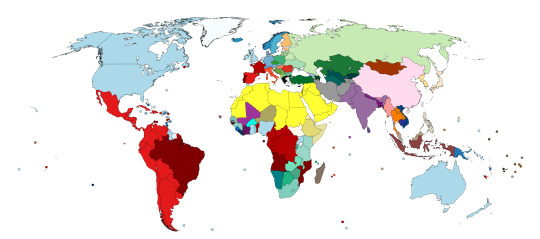

I had to separate the legend from the map because it would not have been legible otherwise. I am aware that the color distinctions are not always very clear, but there are only so many colors in the palette.
The legend is arranged in alphabetical order and languages are grouped by family (bullet points), with branches represented by numbers and followed by the color palette languages within them are colored in, as follows:
Afroasiatic
Chadic (Hausa) — ocher
Cushitic (Oromo and Somali) — light yellow-green
Semitic (from Arabic to Tigrinya) — yellow
Albanian — olive green
Armenian — mauve
Atlantic-Congo
Benue-Congo (from Chewa to Zulu) — blue-green
Senegambian (Fula and Wolof) — faded blue-green
Volta-Congo (Ewe and Mooré) — bright blue-green
Austroasiatic (Khmer and Vietnamese) — dark blue-purple
Austronesian
Eastern Malayo-Polynesian (from Fijian to Wallisian) — dark brown
Malayo-Polynesian (Palauan) — bright brown
Western Malayo-Polynesian (from Malagasy to Tagalog) — light brown
Eastern Sudanic (Dinka) — foral white
Hellenic (Greek) — black
Indo-European
Germanic (from Danish to Swedish) — light blue (creoles in medium/dark blue)
English-based creoles (from Antiguan and Barbudan to Vincentian Creole)
Indo-Aryan (from Bengali to Sinhala) — purple
Iranian (Persian) — gray
Romance (from Catalan to Spanish) — red (creoles in dark red)
French-based creoles (from Haitian Creole to Seychellois Creole)
Portuguese-based creoles (from Cape Verdean Creole to Papiamento)
Slavic — light green (from Bulgarian to Ukrainian)
Inuit (Greenlandic) — white
Japonic (Japanese) — blanched almond
Kartvelian (Georgian) — faded blue
Koreanic (Korean) — yellow-orange
Kra-Dai (Lao and Thai) — dark orange
Mande (from Bambara to Mandinka) — magenta/violet
Mongolic (Mongolian) — red-brown
Sino-Tibetan (Burmese, Chinese*, and Dzongkha) — pink
Turkic (from Azerbaijani to Uzbek) — dark green
Uralic
Balto-Finnic (Estonian and Finnish) — light orange
Ugric (Hungarian) — salmon
* Chinese refers to Cantonese and Mandarin. Hindi and Urdu are grouped under Hindustani, and Bosnian, Croatian, Montenegrin, and Serbian are grouped under Serbo-Croatian.
#langblr#lingblr#spanish#english#french#german#catalan#russian#mandarin#hausa#somali#arabic#albanian#armenian#swahili#ewe#moore#wolof#vietnamese#samoan#palauan#malay#dinka#greek#tok pisin#hindustani#persian#haitian creole#papiamento#greenlandic
56 notes
·
View notes
Text
Next Gen- Yasemin Battersea-Parsons
“𝑰𝒇 𝒂𝒏 𝒂𝒄𝒕 𝒐𝒇 𝒌𝒊𝒏𝒅𝒏𝒆𝒔𝒔 𝒉𝒂𝒔 𝒂 𝒑𝒓𝒊𝒄𝒆, 𝒕𝒉𝒆𝒏 𝒊𝒕'𝒔 𝒏𝒐𝒕 𝒂 𝒈𝒆𝒏𝒖𝒊𝒏𝒆 𝒂𝒄𝒕 𝒐𝒇 𝒌𝒊𝒏𝒅𝒏𝒆𝒔𝒔, 𝒇𝒐𝒓 𝒓𝒆𝒂𝒍 𝒌𝒊𝒏𝒅𝒏𝒆𝒔𝒔 𝒐𝒖𝒈𝒉𝒕 𝒕𝒐 𝒏𝒖𝒓𝒕𝒖𝒓𝒆 𝒕𝒉𝒆 𝒉𝒆𝒂𝒓𝒕, 𝒏𝒐𝒕 𝒕𝒉𝒆 𝒘𝒂𝒍𝒍𝒆𝒕.”
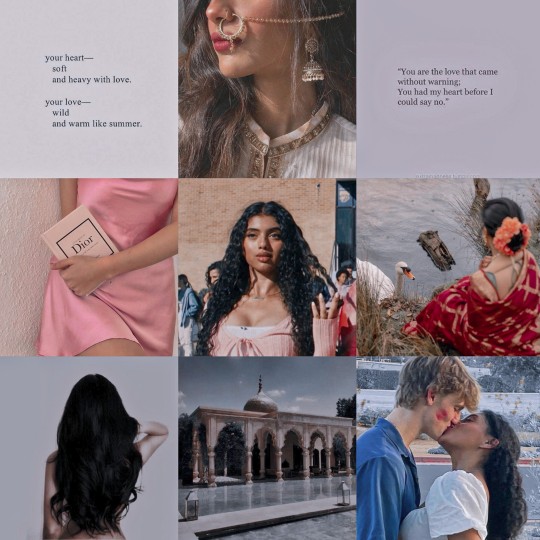
Name: Yasemin Neeru Battersea Parsons
Nicknames: Yas
Birthdate: 16th of December 2004
Zodiac Sign: Saggitarius (i think??)
Personality Type (MBTI): TBD
Blood Status: Pureblood
Nationality: Turkish-Indian-Irish
Physical Appearance
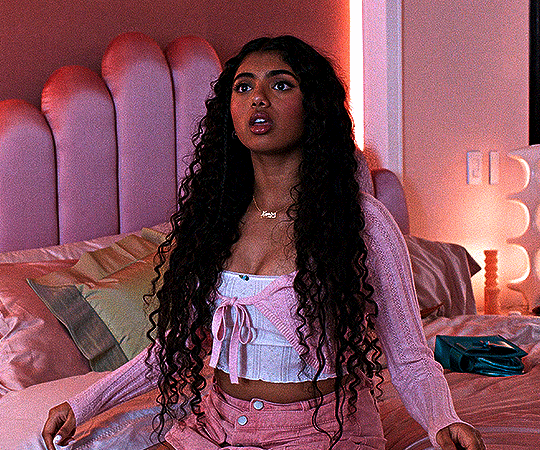
Hair: Black, curly
Eyes: Black
Height: 1.57m
Weight: 64kg
Body Type: Medium-size
Skin Tone: Dark brown
Distinguishing Marks (scars, birthmarks, etc.): One birthmark on her neck
Background
Hometowns
Kolkata, India- The rich and ancient city was the place of birth for Yasemin, and where she spent much of her winter in the Bengali equivalent of Christmas and even participated in religious rites, despite following the Muslim religion more.
Antakya, Turkey- Her other hometown, she lived in a rustic yet wealthy house with her grandmother, where she spent many summers and even visited many mosques and started on her Muslim faith
Dublin, Ireland- Her main residence, living outside the center, she loved how carefree and busy they were and many of her friends lived near, and her formative years were spent there
Family
Mother: Esmanur Zeynep Battersea
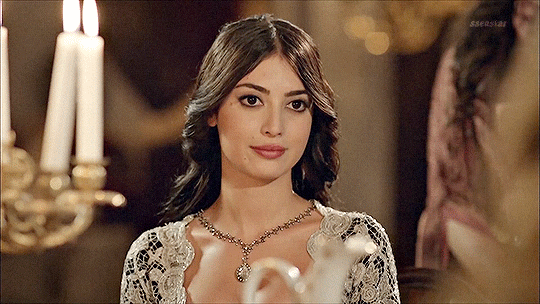
The only living Battersea that directly descended from Simon by then, she was raised as a hanimsultan and was treated like Middle-Eastern royalty despite being long gone. She did not expect to have children after Shreya, and was delighted to have one more child. Despite being fond of Yasemin, her favouritism was never noticed by her daughters
Father: Mahmoud Ismail Parsons

A Bengali businessman, he married Esmanur to enforce his monopoly on the industry and expand his growing empire. When Esmanur was pregnant again, he was surprised and worried, because his wife have had fertility problems years prior and didn't want to risk her life. Nevertheless, Yasemin was born healthy and without much fuss, and he spoiled her
Older sister: Shreya Humashah Battersea Parsons

Although she was first angry at Yasemin's birth, the moment she held her, she knew she loved her. Shreya loved to take care of her and talk about girl stuff, going shopping and having silly moments. Shreya was like a second mother and role model to Yasemin and are very close, even after Shreya marries Kevin Farrell and forms her family with him
Distant cousin: Luke Battersea

A bit closer in age, despite him being prickly and reserved, Yasemin approached him slowly, allowing him to come to her, actively listening to whatever he talked about and giving surprisingly helpful advice and thoughtful gestures, such as baking him his favourite cake for his birthday or when he had a bad day, or ensure that the cook cooks his comfort food once a week, and include him in the family trips
Hogwarts
House: Hufflepuff
Best Class: Herbology
Worst Class: Potions
Boggart: Everybody diminishes her efforts, throwing them and shouting at her that she'll never be enough
Riddikulus: The papers get up and start dancing cha-cha-cha
Patronus: A hare
Patronus Memory: Dancing in the rain when she was eight with her father and Shreya as her mother film
Mirror of Erised: (before turning 19) Achieving peace and stability in her hometowns (after turning 20) having stability, peace and a family with Scott by her side
Amortentia (what she smells like): Victoria's Secret perfume 'shimmer', strawberry bubblegum, henna
Amortentia (what she smells): Ice, cologne, something related to Scott
Career
11-18: Hogwarts student
21-35: Philantropist
36-65: President of the Battersea company
Personality & Attitude
Priorities: Making some good in the world, her family's wellbeing
Strengths: Kind, empathetic, insightful, caring and generous
Weaknesses: Naive, clueless, innocent during her adolescence, way too trusting, a people pleaser and can't say anything bad about anyone
Stressed: During social gatherings and during exams, feeling stupid all the time
Calm/Comforted: Watching her comfort show (FRIENDS), spending time with Shreya, in her bed
Favorites
Colors: PINK, burgundy red, navy blue and lilac
Weather: Sunny
Hobbies: Reading, knitting, baking and creating skincare and makeup routines
Fashion: Yasemin is far more fashionable than her sister Shreya, often wearing heels and short skirts and tops, all in the palette of pink, black and white. She also has curly hair and has a rigorous routine that she always asks not to be interrupted when performing it
Relationships
Significant Other/Love Interest: Scott Morris ( @potionboy3 )
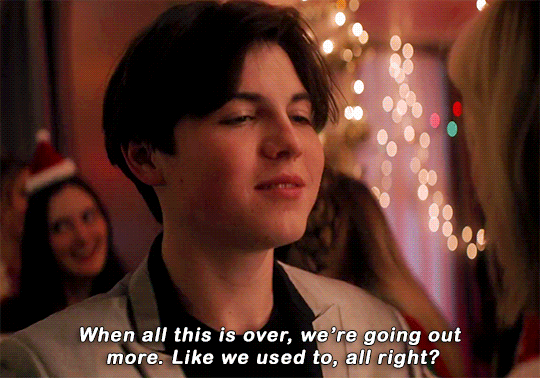
Both friends from the moment they met, unlike her peers, Scott seemed to get her, and Yasemin always felt seen with him. What she didn't know is that Scott had a huge crush on her. A crush that everybody save her seemed to notice. For years, he dropped subtle hints here and there, but the clueless Yasemin didn't seem to see it.
Until, on a party, after sharing a meaningful moment, Scott surprised Yasemin by kissing her and declaring his feelings for her. What was more surprising to Yasemin is that she felt the same. Even though Yasemin was a year ahead of Scott, they saw each other often and even gave him the keys to her house once they became serious.
[MORE TBA]
Friends: Noor Verma Dhendron ( @legilimenace )
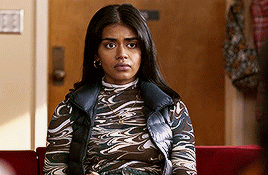
Even though they were different, Noor and Yasemin got along and suprisingly complimented one another. Shreya soon befriended Mansi, Noor's sister, and became inseparable, becoming almost members of the family
Mia Morris ( @gaygryffindorgal )
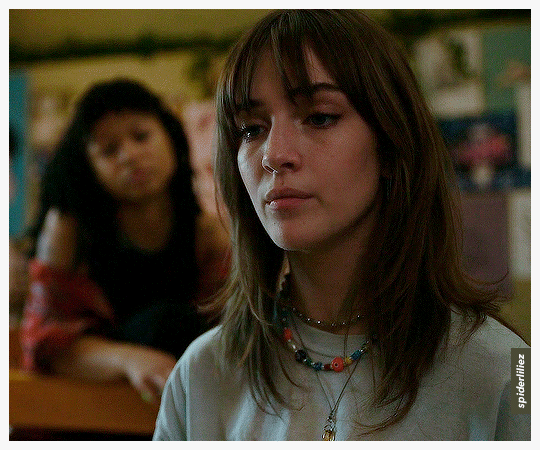
Scott's older sister, Yasemin liked her from the beginning and she was key in setting her up with her brother
[MORE TBA]
Jude Cozens ( @unfortunate-arrow )

Both with similar natures, she met him through Scott and also reminded her of Luke. She was shocked when she learned that he and Noor started dating
Yasemin is looking for friends! I'll favour those born in 2004-5! Hmu or send me an ask if you're interested!
Rivals: TBA (why would you want to antagonize this angel?!)
Trivia
She doesn't drink alcohol due to religious and personal reasons
Her drink of choice is a lime Aquarius
Always has a red velvet cake for her birthday
She hates green peas
Is surprisingly good at breakdance, salsa and dabke, and often does it in heels
Used to hate her curly hair and tried to straighten it like Shreya for most of her teens
While Shreya inherits her father's businesses, Yasemin inherits her mother's legacy
Is medium sized and was always made fun of by her parents' peers and went on crazy diets and developed body dysmorphia due to early development
Almost never went to parties because of people getting drunk and being invasive towards her
Cries easily for everything, yet can be calm in dire circusmtances
Picked up baking thanks to her therapist and often shows up to classes and gatherings with Turkish and Bengali sweets when she feels her friends are feeling down or stressed or wants to celebrate
Has the cutest and most elegant handwriting in Hogwarts (it was voted)
#hp next gen#hp next gen oc#oc: yasemin battersea parsons#mc: shreya battersea parsons#scott morris#mia morris#noor verma dhendron#battersea family#scott x yasemin#mottersea#oc profile#character sheet
10 notes
·
View notes
Text
A Note on the Language And History Of Ponniyin Selvan
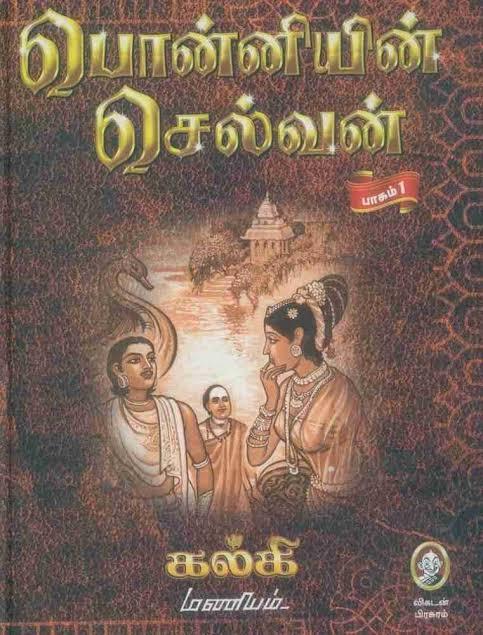
The indented part is an abridged version of Prof. T. Sriraman's Introduction to C V Karthik Narayanan's English translation of Ponniyin Selvan and the rest is mine.
Kalki is the first significant historical novelist in Tamil. There were a few others before him who had attempted writing in the genre but none of them is read now or even remembered in literary histories. It is important to note the long interval between the birth of the novel as a genre in Tamil and the creation of the subgenre of historical fiction
LANGUAGE One explanation for this long interval could be that Tamil writers had first to master this new form before they could gain the confidence for attempting the extremely challenging task of writing historical novels.
Also it took centuries for historical information about ancient Tamil Nadu to be suitably incorporated into books of history; it took a long time too for Tamil prose style to evolve.
Kalki’s acknowledged achievement as a writer consists in a transformation of Tamil prose style into a medium eminently suited for discourse — literary, political, even historical — in the modern world. This transformation is similar to the revolution that Subrahmanya Bharati brought about in poetry.
It should be noted that there were debates about the limitations of vernacular languages like Tamil and Malayalam as compared to English.
Bengali historian Jadunath Sarkar, in his 1915 essay Confessions of a History Teacher said that efforts should be made to write history books and teach history in vernacular languages. Then 24 year old K A Nilakanta Sastri (who would go on to become the most prolific historian in South India) wrote a letter opposing this suggestion by saying that "English serves me better as a medium of expression than Tamil – I mean in handling historical subjects. Perhaps the vernacular is not so well off in this part of the country as it should be". This elicited severe criticism from people like Subramanya Bharathi.
Authors like Kalki challenged such notions through their works. But quite funnily, they had to depend on the works of these same historians (Nilakanta Sastri's eponymous work The Cōlas was a main source of Ponniyin Selvan). So we can't say that novels like Ponniyin Selvan are fully free of their influence either.
HISTORY
One way of interpreting Kalki's, or indeed any colonized writer intellectual's attempt to re-create past history is to view it as a psychological, but politically safe, release for his and his race's wounded pride as colonized subjects. As Meenakshi Mukherjee puts it: " . . . any tale of past bravery or heroism vindicated present servitude".
Kalki firmly believed that centuries of political slavery had clearly resulted in a debilitation of body and mind: "“Owing to centuries-long subjugation under foreign rule, the mental firmness and the physical strength of the people of this country have declined. There cannot be two opinions about the need for the men of this country to regain them".
What interested Kalki was political, religious and literary history but not social and economic history, even when they had a bearing on those other histories. The deluding romanticism is obvious but we must say that . . . a tendency to romanticize, can be made with regard only to the historical novels of Kalki and not to the social novels or the short stories.
We therefore return to the question: How historical, how true to history, is Ponniyin Selvan? The broad outlines of the novel do certainly accord with the historical facts. But there are two intriguing questions in the historical account which must surely have caused problems for Kalki in his overall project (agenda, as some of us might choose to call it) of the glorification of the Chozha age.
• The first is the obvious issue of claim: if Parantaka II (Sundara Chozha) was right to ascend the throne after the death of his father (only if Maduranthaka was still a child), was he justified in declaring his own son Aditya II (Karikala) heir-apparent, thus effectively, and well in advance, blocking Maduranthaka's path to the throne?
• The second question concerns the mystery behind the killing of Aditha Karikala.
Besides, and more importantly, everywhere in the novel there are paeans of praise, in prose and verse, for the Chozha Empire (which in fact had not expanded to its full extent at the time presented in the novel).
We have no reason to believe that these historical people behaved in the same way as in the novel. We know that they are as unrealistic and fictional as Nandini or Poonguzhali.
Sundara Cholan was not a lovelorn paralysed man. Aditha Karikalan was was married to multiple women and perhaps even had a son (or multiple children). It is possible that he only participated in battles but didn't kill Veera Pandyan with his own hands. Rajaraja Cholan was a ruthless conqueror. His heir's mother was a relatively under-represented queen. Kundavai did not marry an orphan, landless prince. There was no Senthan - Maduranthakan baby swapping. In fact, it was Arinjayan's line that usurped the throne from the rightful heir Maduranthakan/Uttama Cholan.
So where does this leave us? It leaves us in an imaginary world to enjoy the fiction, history and fictionalised history and have a good time 😄
#ponniyin selvan#ponniyin selvan 2#aditha karikalan#kundavai#arulmozhi#rajaraja chola#vanthiyathevan#vanthiyadevan#vanathi#poonguzhali#vanmozhi
39 notes
·
View notes
Text

Rabindranath Tagore
Artist: Violet Oakley (American, , 1874-1961)
Date: Early 20th century
Medium: Watercolor on paper
Collection: Pennsylvania Academy of Fine Arts, Philadelphia, PA, United States
Rabindranath Tagore
Rabindranath Tagore (7 May 1861 – 7 August 1941) was an Indian polymath who worked as a poet, writer, playwright, composer, philosopher, social reformer, and painter of the Bengal Renaissance. He reshaped Bengali literature and music as well as Indian art with Contextual Modernism in the late 19th and early 20th centuries. Author of the "profoundly sensitive, fresh and beautiful" poetry of Gitanjali. In 1913, Tagore became the first non-European (non-White) and the first Asian to win a Noble Prize in any category, and also the first lyricist to win the Nobel Prize in Literature. Tagore's poetic songs were viewed as spiritual and mercurial; where his elegant prose and magical poetry were widely popular in the Indian subcontinent. He was a fellow of the Royal Asiatic Society. Referred to as "the Bard of Bengal".
#portrait#watercolor#half length#indian polymath#indian poet#indian writer#indian playwright#indian composer#indian philosopher#social reformer#indian culture#costume#beard#white hair#bengali brahmin#calcuta#blue background#rabindranath tagore#book#fine art#painting#20th century painting#artwork#violet oakley#american artist#american art#indian history
3 notes
·
View notes
Text
ThunderCats? Oh, I'm familiar with it.
I was first introduced to it via reruns on Teletoon Retro. I think I was fifteen, but I'd watch it every day. I love the animated medium, whenever I am writing a story, I picture the characters as being traditionally animated. I loved the show and when the 2011 series came along, I was watching it on YouTube and another site, I forget the name, until it finally came to Teletoon years later.
I've never seen ThunderCats Go. I never will, but I have read about it and would like to see some things re-imagined outside of a comedy series.
Favourite characters? Well, I love tigers and Smilodon so Tygra and Grune are really up there. Bengali too, but I just have to say this and I know I'm going to get hate for this, but with the knowledge that white tigers are brought about by things like inbreeding, I'd like to see Bengali re-imagined as a golden tiger. If I were to write my own ThunderCats, which doubtless would never become a television series, I'd have him as a Golden tiger.
With "The Mummy" being one of my favourite film franchises, naturally Mumm-Ra is also one of my favourites and I don't know, but I've always found that we've never gotten an Aztec version of him a missed opportunity.
I love the franchise, I'm enjoying the new comics and maybe some day, I'll do a some posts commenting on various things, like how I'd personally like to see other species of cats included. Snow leopards, servals, caracals, ocelots, pallas cats, for God's sake give us more! Maybe give us a Dinofelis and a Homotherium too... And a cave lion... And some maneless lions like the Tsavo Man-Eaters too.
Sorry, got a bit side-tracked there.
5 notes
·
View notes
Text
Language (s) in Moonbase Theta Out:
English as a language is taking over the world at an alarming rate, most other countries in which English is not the majority language have it as part of their school curriculum, and like math, you can fail the year if you do not pass the subject.
Why? Well, most of your job prospects will be severely impacted if you do not have at least a grasp of it. Though not as “present” as other consequences of USAmerican and England’s hold over the world, language imperialism is still something to worry about.
Like Minnie Degawan, activist of indigenous people’s rights says: “For Indigenous peoples, languages are not only symbols of identity and belonging to a group, but also vehicles for ethical values. They constitute the fabric of the knowledge systems through which these peoples form a whole with the land and are crucial for their survival. The future of their young people depends on them.”
Of course it is not only the English language that is guilty of the linguistic masacre, my own mother tongue: Spanish is equally if not more guilty. And, unlike how I would like to blame the Western Europeans for everything, Hindi, Mandarin Chinese and many more also play their part. Please notice how all of this is backed by Nation-States Agenda of “Linguistic-Ethnic Unity” like Mexico’s “not-white, not indigenous but (light-skin) mestiz@” project that asked for indigenous peoples to exchange their language (and culture) for social integration.
But what does this have to do with a small little podcast called Moon Base Theta Out?
Moonbase Theta Out is a sci-fi audio fiction podcast produced by Monkeyman Productions. It is 2098. The Moonbase program has been determined unprofitable. The last base, Theta, is twenty weeks from being decommissioned. Most of the crew is in stasis awaiting retrieval. Five remain – Roger Bragado-Fischer, Nessa Cheong, Ashwini Ray, Michell L’Anglois, and Wilder. (monkeymanproductions.com)
In Moonbase Theta Out, our current way of organizing the earth in nation-states has fallen out of fashion. Instead we got corporate enclaves run by mega corporations, and if it sounds terrifying it is because it is. There is a saying that goes “english is the language of money” and in a world where neoliberalism has taken over every character is expected to know english from Brazil to North Africa to France. It is not uncommon for US american media to portray a world in which everyone knows english somehow, but in Moonbase Theta, Out it actually makes sense.
However, english is not the only language spoken in Moonbase Theta Out, within the constraints of the audio medium (in which subtitles are not possible, and the only way translations can be provided is through transcripts) the podcast manage to include portuguese, french, arabic (don’t ask me which dialect) and even some few words in spanish and bengali. The reason for this linguistic diversity? Because Moonbase, even amidst the cyberpunk hellscape, wants to show a future that is blooming with diversity and love.
In a small mini-episode showcasing the poems used in the show, writer D.J. Sylvis talks about how poetry is the connecting vehicle between our main-lead Roger Brigado-Fisher and his husband, Alexandre Brigado-Fisher (their relationship also works to tie the events that happen in the moon and earth). I want to extend this sentiment, and argue that language is the way in which several characters expressed their unique relationship.
Alexandre, for example, is Brazilian (go my latin boy!) and a native Portuguese speaker, Roger on the other hand is not but has learned the language, however when he takes a job for the Consortium he is asked to only speak english. His job causes a rift between him and his husband which ends up in a fight, when Alexandre slips into Portuguese, Roger tries to do the same but ends up forgetting the words; just another example of how their relationship is deteriorating because of the corporate overlords.
Then we have Michelle and his sister Maria, both French. They have had a very rough life that led them to security jobs for the Consortium and said jobs have led them apart.
Michelle tries to establish contact with her while knowing that everything he says would be listened to by his boss (and his enemy Roger). He slips into French when in distress, and the only one to calm them is another French speaker, her sister.
There’s also this very short moment in which Dr. Ashwini Ray has made a friend ze didn’t expect to make and can’t do anything about it because ze is going to the moon in just a few days with hopes of never came back, so ze says a few works in Bangla that ze knows hir friend, Jen Ponton, won’t be able to understand but that anyways, is a subtle way to express hir love for her.
Moonbase Theta Out is far from the only multilingual podcast out there (see: Desperado, MOONFACE, Hi Nay, Dos After You, Monster Dash and Celestial Blood) and I hope we continue to see more.
I also want to motivate you, reader, if you speak any other language, to write a story with it. The best way to help a tongue live is through the beauty of literature, afterall.
3 notes
·
View notes
Text
culture of India
India, often referred to as the land of diversity, is a cultural kaleidoscope that has fascinated and enchanted people from across the globe for centuries. Its rich heritage, traditions, languages, art forms, and cuisines reflect a civilization that has evolved over millennia, leaving an indelible mark on the world. In this blog, we embark on a journey to unravel the multifaceted culture ,culture of India delving into its historical roots, religious practices, artistic expressions, and modern-day manifestations.

Historical Background:
The cultural history of India can be traced back to ancient times, with evidence of human habitation dating back to the Stone Age. The subcontinent has witnessed the rise and fall of numerous civilizations, including the Indus Valley Civilization, which flourished around 3300 BCE. Subsequent waves of migration and settlement by various ethnic groups, including Aryans, Dravidians, Greeks, Persians, and Mongols, contributed to the diversity of India's cultural landscape.
Religious Diversity:
India is the birthplace of major religions such as Hinduism, Buddhism, Jainism, and Sikhism, and has also been a melting pot of diverse faiths, including Islam, Christianity, Judaism, and Zoroastrianism. The religious tolerance and syncretism prevalent in India have resulted in a vibrant tapestry of rituals, festivals, and spiritual practices that coexist harmoniously. From the grand celebrations of Diwali and Eid to the solemnity of Buddhist retreats and Sikh gurdwaras, religion permeates every aspect of Indian life, shaping its customs, beliefs, and social structures.
Art and Architecture:
Indian art and architecture are renowned for their intricacy, symbolism, and spiritual significance. The ancient rock-cut temples of Ajanta and Ellora, the majestic forts and palaces of Rajasthan, and the exquisite carvings of temples in Khajuraho are testaments to India's rich architectural heritage. The country's artistic traditions encompass a wide array of mediums, including painting, sculpture, pottery, textiles, and performing arts such as dance, music, and theater. Classical dance forms like Bharatanatyam, Kathak, Odissi, and Kuchipudi, with their roots in mythology and spirituality, continue to captivate audiences worldwide with their grace and elegance.
Cuisien:
Indian cuisine is as diverse as its culture, with each region boasting its own unique flavors, ingredients, and cooking techniques. From the fiery curries of the south to the aromatic biryanis of the north, Indian food is a gastronomic delight that tantalizes the taste buds with its rich spices and bold flavors. Staples like rice, wheat, lentils, and vegetables form the foundation of Indian meals, which are often accompanied by chutneys, pickles, and dairy products like yogurt and paneer. Street food is also a ubiquitous part of Indian culinary
culture, offering a tantalizing array of snacks and sweets that cater to every palate.
Literature and Language:
India has a rich literary tradition dating back thousands of years, with ancient texts like the Vedas, Upanishads, and epics like the Ramayana and Mahabharata shaping the cultural consciousness of the nation. Sanskrit, the classical language of ancient India, has been the vehicle for some of the world's most profound philosophical and literary works. Over the centuries, regional languages like Tamil, Telugu, Kannada, Bengali, Marathi, Gujarati, and Punjabi have flourished, producing a wealth of literature in poetry, prose, and drama. The Indian diaspora has also made significant contributions to world literature, with writers like Salman Rushdie, Arundhati Roy, and Jhumpa Lahiri garnering international acclaim for their works.
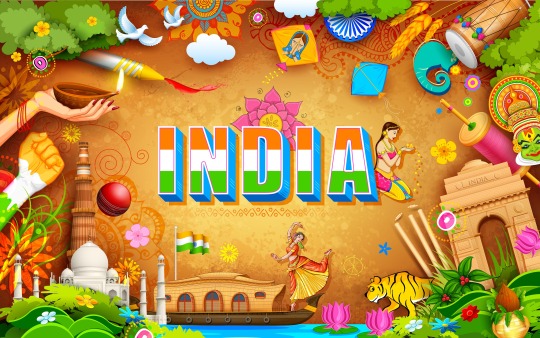
Modern Cultural Expressions:
While India's cultural heritage is deeply rooted in tradition and history, it is also a dynamic and evolving entity that continues to adapt and innovate in response to changing times. The advent of globalization, urbanization, and technology has ushered in new forms of cultural expression, from Bollywood films and indie music to contemporary art and fashion. Social media platforms like Instagram and YouTube have provided a platform for young Indian artists, musicians, and influencers to showcase their talents and connect with audiences around the world. Despite the challenges of modernization, India remains proud of its cultural heritage, embracing both tradition and innovation in equal measure.
Conclusion: India's cultural tapestry is a testament to the resilience, creativity, and diversity of its people. Across the length and breadth of the subcontinent, from the snow-capped Himalayas to the sun-drenched beaches of Kerala, the spirit of India's cultural heritage continues to thrive, enriching the lives of millions and inspiring generations to come. As we celebrate the vibrant mosaic of traditions, languages, and customs that make up the fabric of Indian society, let us also recognize the importance of preserving and safeguarding this invaluable legacy for future generations to cherish and embrace.
2 notes
·
View notes
Text
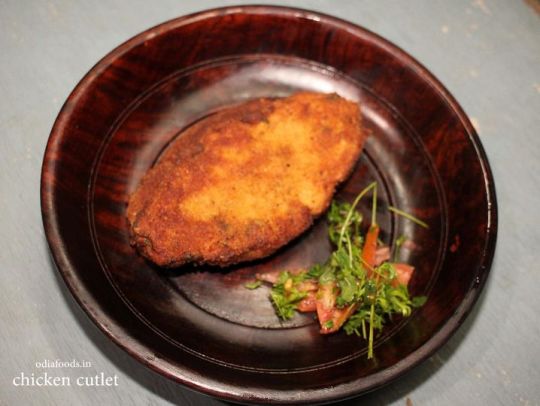
Bengali-style chicken cutlet is a delicious and flavorful dish typically made with minced or shredded chicken, potatoes, and various spices. Here's a basic recipe to make Bengali-style chicken cutlet that i follow.
INGREDIENTS:
500 grams minced chicken
2 medium-sized potatoes, boiled and mashed (optional , i have not used this for my cutlet )
1 large onion, finely chopped
2-3 green chilies, finely chopped (adjust to taste)
1 spoon Red Chiles powder
2-3 cloves garlic, minced
1-inch piece of ginger, minced
1 teaspoon garam masala powder
1 teaspoon coriander powder
1/2 teaspoon cumin powder
1/2 teaspoon turmeric powder
Salt to taste
Fresh coriander leaves, chopped
Fresh Podina leaves, chopped
Fresh Ajawain leaves, chopped
Bread crumbs
3 Eggs
Oil for frying
The egg coating adds a delicious crispy texture to the chicken cutlets and helps the bread crumbs adhere better. Enjoy your tasty chicken cutlets with this extra layer of flavor!
OdiaFoods.in primarily celebrates the rich cuisine of Odisha while also offering a glimpse into national and international culinary delights. Rooted in Odia tradition, it embraces diversity, catering to both local and global palates with authentic flavors and recipes.
2 notes
·
View notes
Text
Bengali Language: ইংরেজি মিডিয়ামেও স্কুলে বাংলা পড়ানো বাধ্যতামূলক! সিদ্ধান্ত মন্ত্রিসভার বৈঠকে
সুতপা সেন: পাঞ্জাব, মহারাষ্ট্র ও তেলেঙ্গানার মতোই বাংলায় বাধ্যতামূলক হতে পারে রাজ্যের ভাষা। ইংরেজি মাধ্যম বিদ্যালয়গুলোতে বাংলা পড়ানো বাধ্যতামূলক করতে চলেছে সরকার। এদিন মন্ত্রিসভার বৈঠকে এমনই সিদ্ধান্ত নেওয়া হয়েছে। এমনকী তৈরি হবে একটি ��মিশনও। একজন প্রাক্তন বিচারপতিকে মাথায় রেখে রাজ্যে গঠিত হতে চলেছে শিক্ষা কমিশন। স্বাস্থ্য কমিশনের ধাঁচে এই কমিশন গঠন করা হবে। সেখানেই বেসরকারি বিদ্যালয়গুলোর…
View On WordPress
1 note
·
View note
Note
I FEEL YOUR STRUGGLE WITH HINDI !! mei toh even u.p se hu 🤓☝🏻 tab bhi Hindi bilkul nahi pasand .. just waiting to give my 10th boards next year and get it done with forever 👋🏻


it's okiee boo,, i understand lol. but i think it's same with everyone's mother tongue as a subject, as a student in an english medium school in india, because our first language becomes english 💪🏽
but omgeee i too dropped bengali last year 😭 istg bro dropping a subj after boards feels so *chefs kiss*
3 notes
·
View notes
Text

Best of luck..... & all the best.... "Maths" learner, esp at "MATRICULATION" (10th Standard) stage.....for my remembrance, things come up resulting from "my Additional(extra) Subject, which I did choose as "MATHEMATICS"(Maths) in my 10th Standard(MATRICULATION Stage), though at that time I got my registration into "TRIPURA BOARD OF SECONDARY EDUCATION" (T. B. S. E IND), courses was conducted in BENGALI MEDIUM+ENGLISH was the mandatory subject_paper in language GROUP.........##@this "SCREENSHOT" which I send you, reminding you that I did exercise, learnt in Additional Maths, with that topic for instance, comes UP with the chapter of "STATISTICS"..... Though I just scraped through in passing, which was 34%(PERCENTAGE:THIRTY FOUR), I scored only 39/100.....there was 5(FIVE) marks EXTRA, which was added to my Grand total of other main subjects, my GRAND TOTAL did stand at that time 535/900,......Bad luck..... 5(FIVE) marks less to obtained my FIRST DIVISION..... It did lack 5(FIVE) marks to secure my 1st DIVN...
2 notes
·
View notes
Text
Beguni
Food, especially in Bengal, is a medium to express love, togetherness, and an unwavering connection to one’s roots. Beguni, derived from the Bengali word ‘begun’ meaning eggplant, has been a cherished part of Bengal’s culinary heritage for generations. It is said to have emerged during the Mughal period, heavily influenced by the Mughlai cuisine that flourished in the region. This deep-fried…
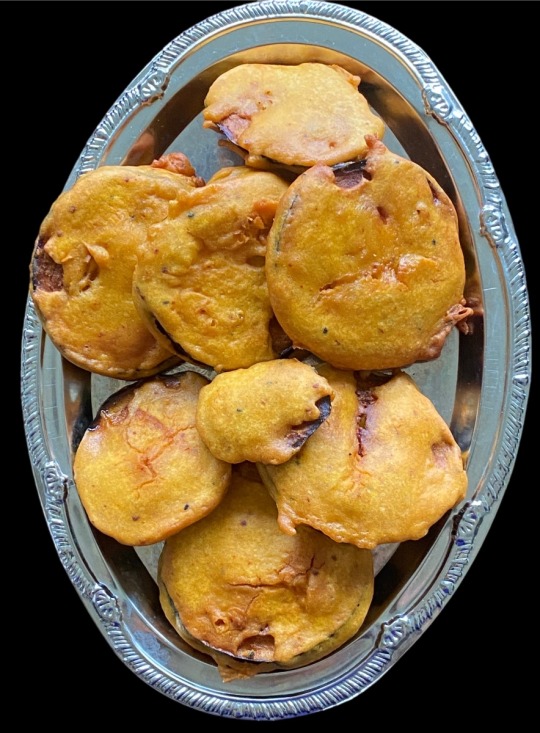
View On WordPress
#beguni#bengali#bengali snacks#bengalicuisine#indiancooking#indiancuisine#indianfood#indianspices#vegetarian#vegetarian recipes#vegetarianfood#west bengal
3 notes
·
View notes
Text
♡kacha golla♡
hi!
I am back with another delightful Bengali dessert! This sweet is very popular among Bengalis and is a great option for those who wish to hold back on their sugar intake. Kacha golla is a mildly sweet dessert that is made with chana, sugar, cardamom powder, sweetened condensed milk, and rose water. Since golla means round, I'm sure you can guess that these sweets will be round spheres like roshogolla. However, this dessert is entirely different from roshogolla. Once the chana is made, the remaining process is fairly simple.
I have written about the process of making chana in my post about roshogolla, however, I have added some pictures of the process here as chana is a staple in Bengali desserts. I used about 1 full gallon of milk to get this amount of chana.





After the chana is formed, a cheesecloth is the quickest and most efficient way to extract all the whey (liquid shown in the glasses) from the solids. However, as many people most likely do not own a cheesecloth, I have shown that you can use a regular strainer and lightly press down on the chana to remove the whey. Once the whey is removed, the chana should look tight and compact.
The next step is to split the chana in half. The reason for doing this is because one half of the chana will be sticky and warm, whereas the other half will be tight and cool. This helps ensure that the kacha gollas can be properly formed into mini spheres.
After this step, you can keep half of the chana aside and begin adding the ingredients to the other half. First, you should make sure all of your ingredients are measured and laid out. This helps you maintain mise en place, a French term that simply means "everything in its place". Crumble up the chana with your hands to break up the shape. Always make sure to wash your hands before any of these steps :) Then, add 1 tsp of cardamom powder and 1 tsp of white granulated sugar and knead the dough with your knuckles until it is soft and smooth. If you have read my other recipes, you have probably noticed that a lot of Bengali desserts use the same ingredients, but the end results vary depending on what you choose to make.

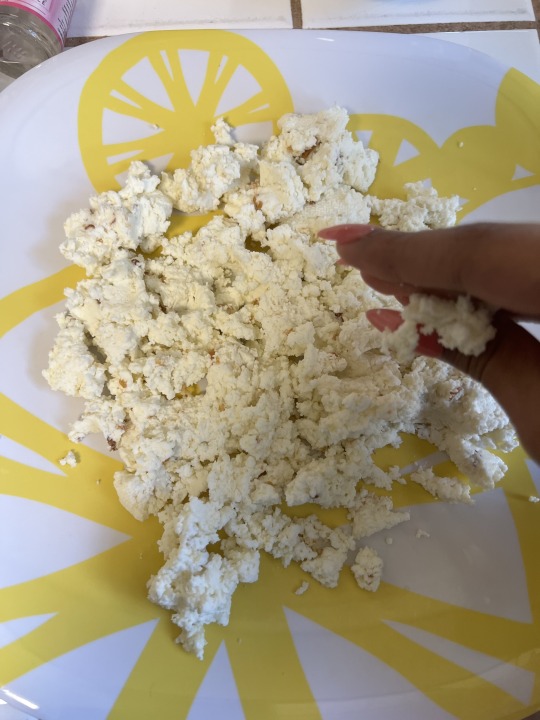
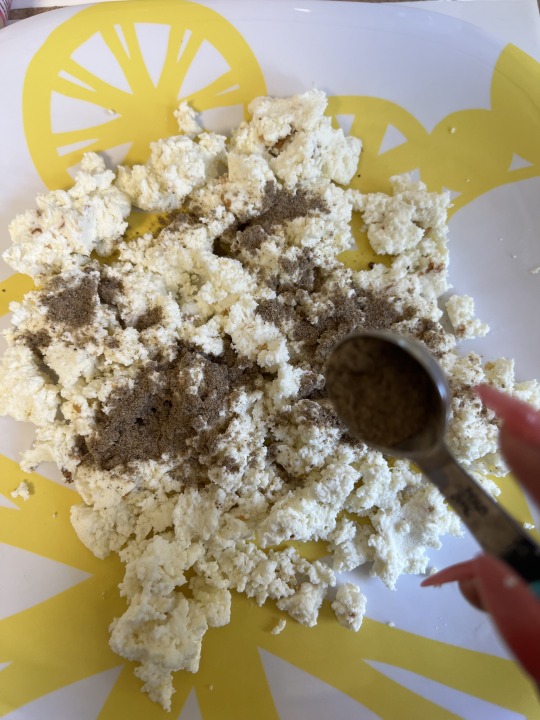


Fun fact: Another name for kacha golla is pranohara. This term is very interesting to me because it practically suggests the sweet is so delicious that it feels surreal. Pran means life so I thought this was a descriptive and appropriate name for this sweet :)
When the dough is kneaded, you can add it to a pan on medium heat. Add a few drops of rosewater (less is more). If you do not have rosewater, you can skip it but feel free to make your own rosewater with fresh rose petals. Then, I added one tbsp of sweetened condensed milk. You can definitely add more if you want your kacha gollas to be sweeter, but I have kept mine less sweet in accordance with my dietary goals. Turn the heat up a bit and saute the mixture with a wooden spoon. The reason for using a wooden spoon is that it works well with high heat levels and is more sanitary than other materials. The sweetened condensed milk will release some liquids, so keep stirring the mixture until it becomes slightly sticky and tight again.





This should only take about 5 minutes on a medium-high heat. Once this is completed, you can add this mixture to the chana you kept aside from earlier. Crumble them together and knead them into a warm dough. Now, you are free to make balls by rolling your palms together and placing them on a plate. Traditionally, these balls are then covered in milk powder, though I have not used any as it is difficult to find. This step only changes the appearance of the kacha gollas, but feel free to use it if you have any. I decorated mine with pistachios and a strand of original saffron (more info about saffron in my roshogolla post) and got about 2 dozen kacha gollas. If you make larger balls, you will get about 11-12.
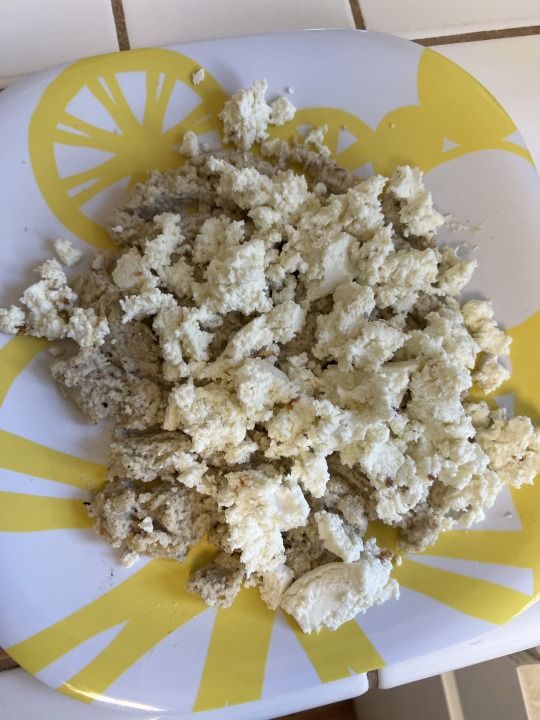
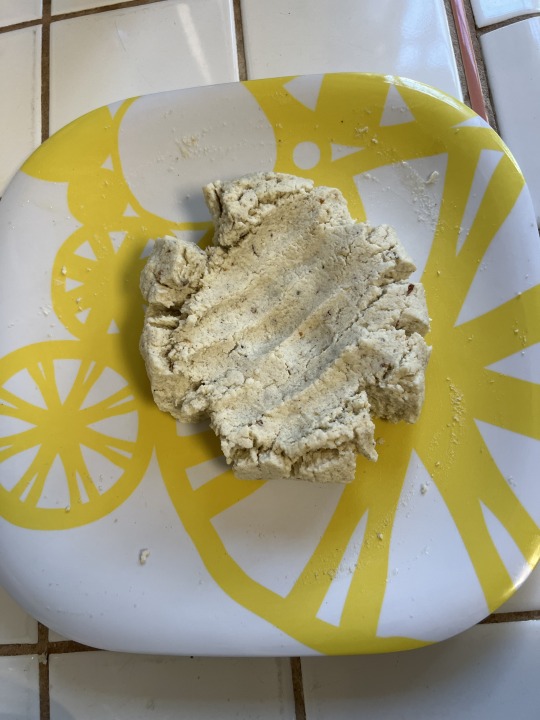


Kacha golla is a scrumptious dessert perfect for anyone with health concerns. The taste is indescribable, but it has a warm touch of saffron and a mellow aroma of rose. If you want more details, try it yourself!
see you next time!
3 notes
·
View notes